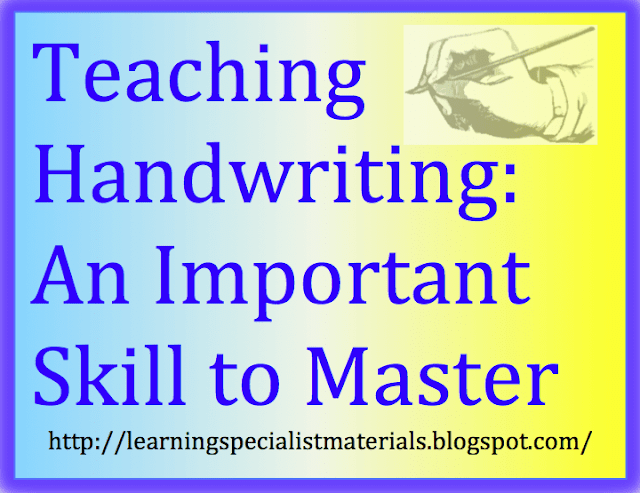This week I wanted to tell you about my online store, Good Sensory Learning. I’m Dr. Erica Warren, and I established this site so I could share all the materials that I have created over the last 20+ years as a learning specialist and educational therapist. When I first began my private practice, Learning to Learn, I had great difficulty finding fun and multisensory materials for my students that were effective and engaging. So back in 2005, I made it my mission to design and distribute high-end, remedial products as well as memorable, motivating lessons that bring delight to learning. If you would like to try a free sampling of my activities , CLICK HERE . How Are the Products Organized at Good Sensory Learning? You can download my Free Printable Catalog or you can browse the site using the grey “search all products” bar in the top right of any page with keywords such as dyslexia, working memory, and executive functioning. What’s more, drop down menus in the red banner allow you t...
With the integration of technology into the classroom and limited instructional time, teachers spend less and less time on the teaching of penmanship. In fact, many schools have stopped teaching script altogether. Instead, the instruction and practice time, that was once used to refine printing and cursive skills, have been reallocated to other tasks such as keyboarding.
What Are the Long-Term Effects of Limited Instruction on Penmanship?Because young learners are spending less time on penmanship, many students do not fully develop this skill, and their fine motor abilities suffer. Therefore, when they write, they have to think about letter and word formation, leaving little to no room for listening, the formation of ideas or sentence structure. In addition, we are seeing a number of adverse effects across areas of academics:
- Because student handwriting skills are not fully developed to a degree of automaticity, many students still need to concentrate on penmanship. As a result, they have less cognitive space to devote to the complicated tasks of listening, writing and solving mathematical computations.
- Note-taking skills suffer as students are concentrating on the act of writing instead of the academic content that the teacher is instructing.
- Poor penmanship can result in illegible notes and students can lose points on assignments that are difficult to decipher.
- Many students are less motivated to write because the process is labor intensive and tiring for the hand.
- When students have poor penmanship, they are often shy about others seeing their work.
- Practicing penmanship also helps to develop fine motor dexterity and strengthen the muscles of the hand.
Areas to Focus on When Teaching Handwriting?
- Formation of letters: Teaching the proper formation of the letters is key to neat handwriting.
- Legibility of Penmanship: Helping students to learn the proper sizing and placement of letters and words is important too. You might like to check out one of my products: Color Coded Handwriting
- Speed of Penmanship: Practicing penmanship also helps to increase a student's ability to form letters quickly. This can be key to developing comprehensive note-taking skills.
- Consider the expression: "It's all in the presentation." Be sure to make your activities sound fun. For example, instead of calling an activity "learning script" or "learning cursive," consider using a fun, exciting name such as "learning roller-coaster letters."
- Strengthen fine motor dexterity by integrating fun activities such as mazes and coloring into a daily routine.
- Get tracing paper and let your students trace images and words. Also, using carbon paper between an image and a blank piece of paper will allow kids to trace over images and reproduce them on the blank piece of paper. These activities will also help to develop fine motor skills.
- Have fun making a collage of letters. For instance, when teaching the letter "b," cut out this letter from magazines and paste them onto a piece of cardstock.
- Allow students to form letters and words out of fun tactile materials such as sand, marbles, shaving cream, clay and more.
- Consider reading my blog post: 5 Strategies that Make Learning the Alphabet a Lot of Fun.
I hope you found this helpful! I'd love to hear your comments.
Cheers, Dr. Erica Warren
Dr. Erica Warren is the author, illustrator, and publisher of multisensory educational materials at Good Sensory Learning and Dyslexia Materials. She is also the director of Learning to Learn and Learning Specialist Courses.
· Blog: https://learningspecialistmaterials.blogspot.com/
· YouTube Channel: https://www.youtube.com/user/warrenerica1
· Podcast: https://godyslexia.com/
· Store: http://www.Goodsensorylearning.com/ & www.dyslexiamaterials.com
· Courses: http://www.learningspecialistcourses.com/
· Newsletter Sign-up: https://app.convertkit.com/landing_pages/69400
· YouTube Channel: https://www.youtube.com/user/warrenerica1
· Podcast: https://godyslexia.com/
· Store: http://www.Goodsensorylearning.com/ & www.dyslexiamaterials.com
· Courses: http://www.learningspecialistcourses.com/
· Newsletter Sign-up: https://app.convertkit.com/landing_pages/69400


Comments
Post a Comment